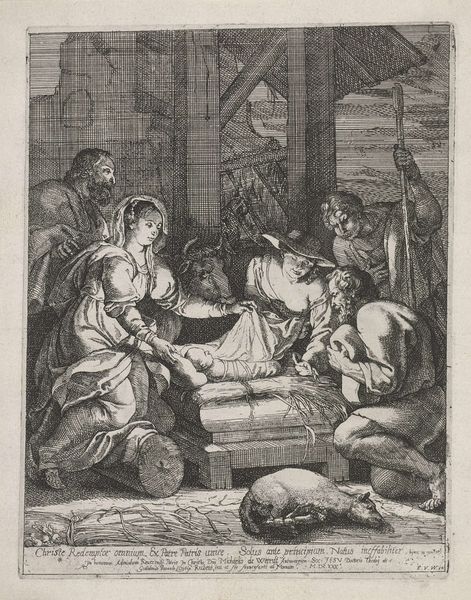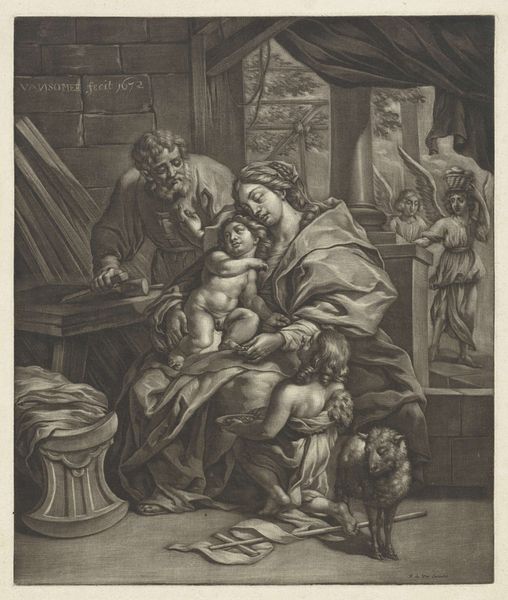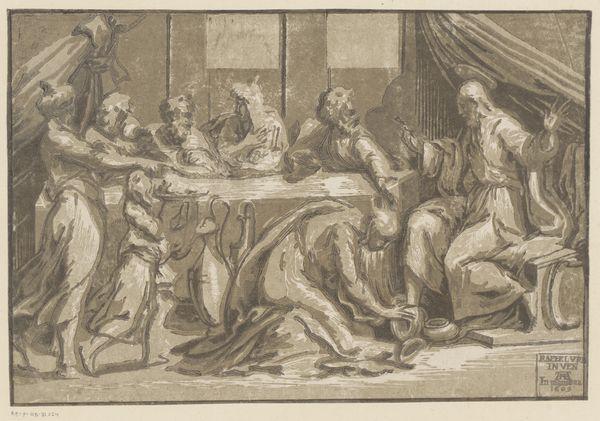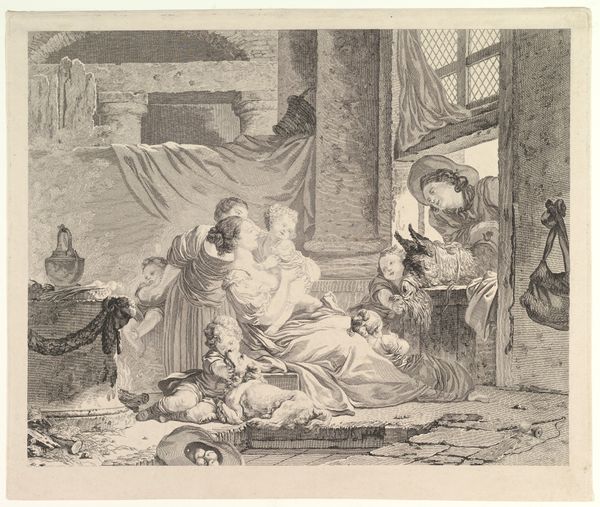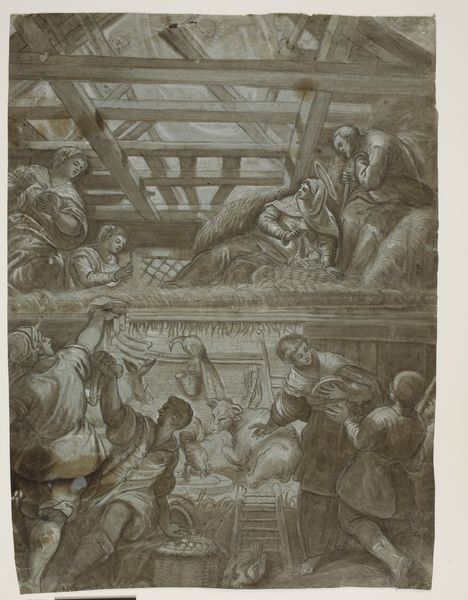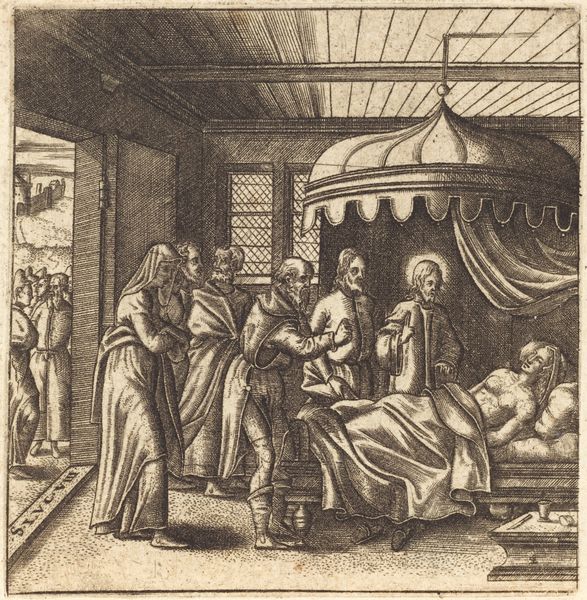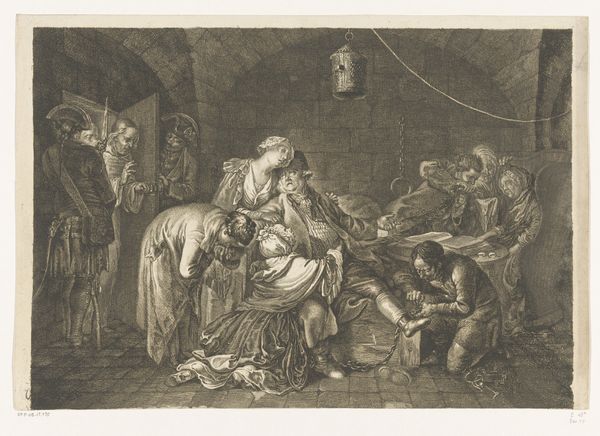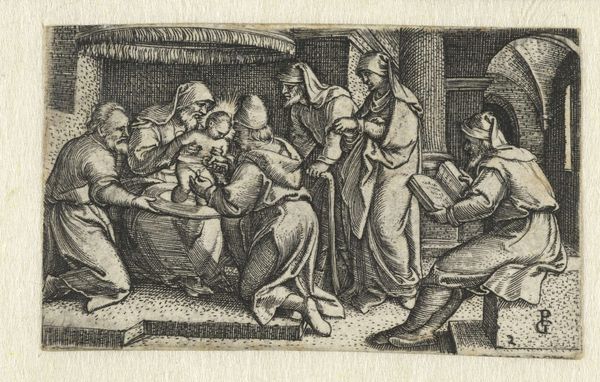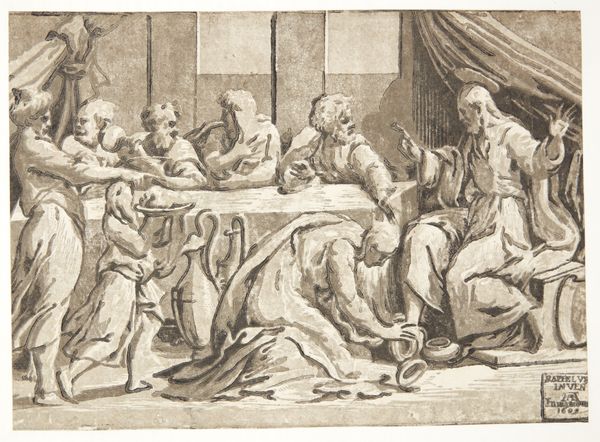
engraving
#
narrative-art
#
baroque
#
figuration
#
history-painting
#
engraving
Dimensions: height 143 mm, width 172 mm
Copyright: Rijks Museum: Open Domain
Editor: This engraving, "Maria Magdalena zalft de voeten van Christus," made by Willem Panneels somewhere between 1610 and 1634, really strikes me with its intricate detail. There’s almost a sense of staged drama. What kind of commentary was Panneels trying to make? Curator: He's placing this intimate moment—Mary Magdalene anointing Christ’s feet—within a larger social context. Consider the Baroque period’s interest in dramatic realism and religious subjects for public consumption. Who is included at this table, and who is placed subserviently at the floor? Editor: Well, it seems pretty clear. We have Christ and his disciples seated at the table, seeming a bit austere, while Mary Magdalene is literally at their feet. Was it common to depict Biblical scenes through the lens of social hierarchy like this? Curator: Absolutely. This wasn't just about illustrating a religious event; it’s about reinforcing a specific societal order. Patronage influenced the types of artworks being made. How might a patron from the church or aristocracy viewed this scene, reinforcing the position of religious authority over public piety? Editor: I hadn’t thought about the influence of patronage in that light. So, you’re suggesting this engraving, while depicting a moment of humility, ultimately served to bolster the existing power structure? Curator: Precisely. The *politics of imagery* is all about the *who*, the *how* and the *why*. Considering these things help unpack visual stories from our past. Editor: It's incredible how understanding the historical and cultural forces behind the creation of art can reshape how you view it! I am thankful for that. Curator: And likewise, thinking about present day audiences can breathe new meaning into the cultural symbols embedded in images from our past.
Comments
No comments
Be the first to comment and join the conversation on the ultimate creative platform.


